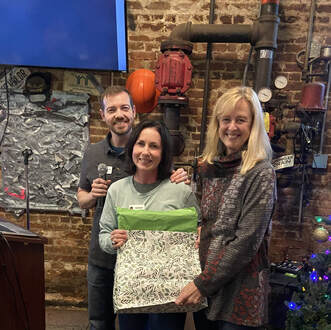 Jared Teutsch, Birds Georgia Executive Director, and Paige Martin, Board Chair, present Melinda Langston with the 2023 Scottie Johnson Spirit Award. Photo by Dottie Head. Jared Teutsch, Birds Georgia Executive Director, and Paige Martin, Board Chair, present Melinda Langston with the 2023 Scottie Johnson Spirit Award. Photo by Dottie Head. Birds Georgia was delighted to present long-time volunteer Melinda Langston with the 2023 Scottie Johnson Spirit Award at the Holiday Party and Annual Meeting on Sunday, December 3. Melinda has been a volunteer with Birds Georgia for many years. For several years, she managed the Wildlife Sanctuary Program before it was turned over to staff position. During her tenure as volunteer coordinator for that program, she revamped the requirements for certification, created a best practices document, and was a fantastic ambassador for the program bringing many new properties into the program AND spreading the word about the program to other organizations and to our members. She later joined the Birds Georgia Board of Directors, where she served for several years. In recent years, Melinda has worked closely with the conservation program coordinator to certify properties that were due for certification visits, including properties further afield that are more difficult for our Avian Advocate volunteers to visit. When Birds Georgia's staff person left the organization, Melinda stepped in to catch up a backlog of certifications and is currently working with conservation program staff to update and modernize the certification process so that it can better address properties across the state. Melinda is a Birds Georgia Master Birder, a Master Naturalist, and a fantastic volunteer for Georgia Audubon! About the Scottie Johnson Spirit Award In 2018, Georgia Audubon lost an incredibly dedicated volunteer and dear friend, Eleanor Scott Johnson. "Scottie", as her family and friends called her, was an avid birder and long-time volunteer for Georgia Audubon. There wasn’t a task that Scottie wasn’t up for, whether that was giving educational presentations, walking a Project Safe Flight route, certifying wildlife sanctuaries, or writing the Ask Chippy column. Scottie always raised her hand to help us out. She was a nurse, a mother, a Master Birder, and a wonderful human being with an amazing spirit. Although we lost Scottie to cancer in 2018, we continue to celebrate her spirit, kindness, and perseverance annually by honoring an outstanding volunteer with the Scottie Johnson Spirit Award. Anne McCallum, a long-time volunteer with Georgia Audubon received the inaugural award in 2019, Charles Loeb was the 2020 recipient, Steve Phenicie received the award in 2021, and Mary Kimberly was recognized in 2022. Birds Georgia commissioned a watercolor painting of a Red-headed Woodpecker by Amanda Woomer, Birds Georgia Board Member, to present to Melinda in recognition of her service to the organization.
0 Comments
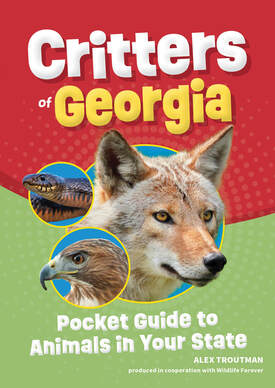 By Sheridan Alford, Director of Community Engagement The perfect wildlife guide for your young birder and explorer. Critters of Georgia, by Alex Troutman, is a great companion to the fun adventures that await in our Georgia backyards. The book features 63 critters from the Peach State. Each species is showcased with a professional-quality photograph paired with neat details such as habitat, range, and preferred food sources. Illustrations of the critter’s tracks complement the information, and a “Did You Know?” paragraph provides fascinating trivia. Critters of Georgia includes important-to-know mammals, birds, reptiles, and amphibians. Alex Troutman is a Fish and Wildlife Biologist and Environmental Educator passionate about sharing and immersing the younger generation in nature. Having grown up dreaming of being a wildlife biologist, Alex knows how pivotal it is to have representation within any field. Through his studies at Georgia Southern University, Alex has been able to focus on Conservation Biology and learn the best ways to communicate the need for Georgia’s beloved species. With a passion for nature that started when he was young, Alex was always amazed by the Red-tailed Hawks soaring overhead when he went fishing with his family. He looked up to conservationists like Steve Irwin and Jeff Corwin. Now, he has made a career out of that passion and curiosity. You can find him camping, exploring nature with his dog, and birding in his spare time. The way this pocket guide breaks down key information for each species with gorgeous photos to reference characteristics is perfect for any budding biologist. The “Bird” section even includes information about migration and nest sizes so children can understand the differences that make all of our Georgia species unique. To learn more or purchase copies, visit the Adventure Keen Shop. By Steve Phenicie
Sandhill Cranes are like NBA basketball players and NFL linemen – they’re big guys, among the largest birds found in Georgia. They stand three and half to four feet tall, have a wingspan of six to seven feet and weigh seven to 10 pounds. Although bulkier than a Great Blue Heron, they’re about the same size. Within the last few decades, Sandhills have greatly expanded their nesting range and numbers in the upper Midwest but are still vulnerable to habitat loss. They reach their peak abundance at migratory stopover points on the Great Plains. The early spring gathering on the Platte River in Nebraska is among the greatest wildlife spectacles on the continent, with more than a quarter of a million birds present at once, emitting their loud, rolling, trumpeting sound. This fall you may soon see them cruising around the Georgia sky – if you haven’t already – on their way to wintering grounds in Florida. Depending on conditions, some don’t go that far. Thousands gather at the Hiwassee Wildlife Refuge on the Tennessee River near Birchwood, Tenn., and sometimes a few show up during Atlanta’s Christmas Bird Count. Other spots you might see them are the Okefenokee National Wildlife Refuge, the Grand Bay Wildlife Management Area at Valdosta, and Eufaula National Wildlife Refuge along the Chattahoochee River between Georgia and Alabama. By contrast, some populations in Mississippi, Florida, and Cuba do not migrate. These birds have a long neck, long, black legs, and a short tail covered by drooping feathers that form a “bustle.” The bill is longer than their small head. Sandhills are slate gray, often with a rusty wash on the upperparts. Adults have a pale cheek and red skin on the crown. Juveniles are gray and rusty brown, without the pale cheek or red crown. Their diet varies widely with location and season. It includes insects, roots of aquatic plants, rodents, snails, frogs, lizards, snakes, nestling birds, berries, and seeds. They may eat lots of cultivated grain if they can get it. Their habitat varies too, but they usually nest among marshy vegetation in water up to three feet deep, although sometimes on dry ground close to water. The nest, built by both sexes, consists of a mound of plant material. It may be built up from the bottom or may be floating, anchored to standing plants. The female usually lays two eggs but sometimes one or three. Chicks can leave the nest within eight hours of hatching and are even capable of swimming. They stay close to their parents for nine or 10 months. Some cool facts about Sandhills:
The Georgia Audubon Board of Directors has voted to change the name of Georgia Audubon to Birds Georgia. This decision comes in response to troublesome revelations about the organization’s namesake – John James Audubon – which prompted the board to empanel a Name Task Force to explore what the “Audubon” name means in light of the organization’s work, mission, and constituency and how it might impact their ability to attract younger, diverse audiences in the years to come.
“Our work was not to sit in judgment of the man, but to understand how the Audubon name was either enabling or frustrating our ability to fulfill our mission of building places where birds and people thrive,” says Marc Goncher, vice-chair of the Board of Directors and chair of the Name Task Force. “From the process, we learned that there are fellow bird conservationists and prospective bird lovers who feel unwelcome when we use the Audubon name. As our state continues to diversify and new generations join the birding community, we foresee a declining awareness of the Audubon brand and reduction in positive association with what it was intended to represent. We also heard clearly that our name needs to reflect what our organization is all about … birds.” The task force spent six months researching, discussing, and seeking to understand all points of view before forming a recommendation to present to the board. In this time, Georgia Audubon hosted a webinar and discussion with Gregory Nobles — biographer of John James Audubon: The Story of an American Woodsman — to better understand the man and his life. The task force also sent a survey to more than 10,000 members, donors, partners, and constituents to gather input on the Audubon name and how it relates to Georgia Audubon’s work, mission, and constituency. Additionally, the task force, leadership, and staff held numerous conversations with stakeholders to gather further feedback including hosting two listening sessions, one in-person and a second virtually, for constituents to share their thoughts. “Our new name, Birds Georgia, states clearly what our work is all about, and it better reflects our values of inclusivity and openness to all people. There are many threats facing Georgia birds and their habitats, and it will take all of us working together to overcome these challenges. Birds Georgia looks forward to building upon the successes we achieved as Atlanta Audubon Society and, later, as Georgia Audubon, to achieve our vision of building a conservation-minded and fully-engaged Georgia where birds prosper, habitats flourish, and understanding grows. As we seek to engage the next generation of birders in the critical fight against conservation challenges, we must broaden and diversify the communities we work with across the state. We will be better able to do that as Birds Georgia,” says Executive Director Jared Teutsch. Audubon has not always been part of the organization’s name. Established in 1926 as the Atlanta Bird Club, the organization later voted to become an independent chapter of National Audubon Society and changed to the name Atlanta Audubon Society. In 2020, the organization became Georgia Audubon, reflecting a new statewide focus. The organization will celebrate its Centennial Anniversary in 2026. “While we may be changing our name to Birds Georgia, we are not changing our mission or the critical work we do to protect birds across the state,” says Board Chair Paige Martin. “The Board of Directors listened to the feedback we received and felt that Birds Georgia more intuitively states who we are and what we do. The new name is also more welcoming to people from all backgrounds. At a time when birds need our help more than ever, we do not want our name to be a barrier for anyone who would like to join in our work building places where birds and people thrive.” Birds Georgia is among several independent Audubon chapters changing its name in light of revelations about John James Audubon. Other chapters, including Seattle, Portland, Madison, Chicago, Golden Gate, Detroit, Washington D.C, and others have either recently rebranded or announced their intent to move away from the Audubon name. Birds Georgia will continue to be an independent chapter of National Audubon Society leveraging the nationwide network of bird conservation organizations to conserve birds and their habitats in Georgia and beyond. Click the links below to learn more. 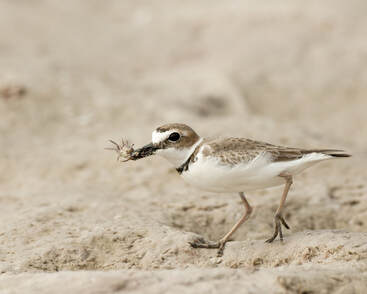 The Wilson's Plover is one of several Georgia birds that will get a new name. Photo by Gail DuBois, Audubon Photography Awards. The Wilson's Plover is one of several Georgia birds that will get a new name. Photo by Gail DuBois, Audubon Photography Awards. By Steve Phenicie and Dottie Head On November 1, the American Ornithological Society (AOS) announced that they will be renaming all English-language names of birds within their geographic jurisdiction that are named directly after people since some of these names carry associations with historic injustices. The Cornell Lab of Ornithology posted in support of this decision, “Determining which names to change case by case would be subjective and intractable. Changing all eponymous names is a clear standard. It also provides an exciting opportunity to generate bird names that are more informative about the birds themselves.” There has been a movement afoot by some in the world of ornithology advocating that birds should carry descriptive names instead of those of individuals. For example, the Black-throated Green Warbler and Blue-winged Warbler are excellent descriptors for these birds. Their predominant characteristics are part of the name making them easier to identify and remember, especially for new birders learning to identify birds in the field. We recognize that people will have different opinions about this process and the challenges of renaming so many species. In Georgia alone, we have more than 20 birds named for humans. Here are some birds you might at least occasionally see in Georgia that are named for people and a bit of insight into who these people were and why the birds were named after them (The list is not comprehensive). Wilson’s Storm-petrel, Wilson’s Plover, Wilson’s Snipe, Wilson’s Phalarope, and Wilson’s Warbler: When it comes to having Georgia birds named for him, Alexander Wilson is tops. Wilson (1766-1813), remembered as perhaps America’s greatest ornithologist prior to John J. Audubon, was born in Scotland and apprenticed as a weaver. He didn’t care for weaving but became interested in poetry. Wilson also wrote satirical commentary on the conditions of weavers in the mills. One of them offended a mill owner, which resulted in his arrest. He was often in trouble with the law, didn’t pay much attention to weaving, lived in poverty, and in 1794, emigrated to America. He settled in Pennsylvania, turned to teaching and met the famous naturalist William Bartram, who encouraged his interest in ornithology and painting. Resolved to publish a collection of illustrations of all the birds of North America, Wilson traveled widely, collecting and painting. The result was the nine-volume American Ornithology (1808–1814). Of the 268 species of birds illustrated in its pages, 26 had not previously been described. His bird illustrations were an inspiration for John J. Audubon and others. He is buried in Philadelphia. Swainson’s Thrush and Swainson’s Warbler: William Swainson, like Alexander Wilson, had a lot of birds named for him although these are the only two found in Georgia. Swainson (1789-1855) was born in London and is remembered for his colorful drawings of nature, especially of shells and bird feathers. During his career Swainson published more than 40 works and traveled to Brazil, New Zealand and Australia to pursue his passion. Franklin’s Gull: Named for Ben? Don’t bet the Liberty Bell on it. In 1832, on the first of two expeditions to northwestern Canada led by Sir John Franklin, ornithologists detected the bird we know as Franklin’s Gull, although they thought it was the similar Laughing Gull. On the subsequent expedition, Dr. John Richardson noted that it was a distinct species and named it Franklin’s Rosy Gull, in honor of the expedition leader. Franklin, an Arctic explorer who was born in England in 1786, was perhaps best-known for his ill-fated expedition in 1845 to find the Northwest Passage and died in 1847 near King William Island in what is now Nunavut territory, Canada. His two ships, the Erebus and the Terror, became stuck in ice, and their wreckage was not found until 2014 and 2016, respectively. Some members of his expedition turned to cannibalism in an attempt to survive. Lincoln’s Sparrow: This one has nothing to do with that famous rail-splitter from Illinois. Lincoln's Sparrow was named by John J. Audubon after his buddy, Thomas Lincoln of Dennysville, Maine. Lincoln shot the bird on an expedition to Nova Scotia with Audubon in 1834. It pays to know people in high places. Cooper’s Hawk: Again a case of rubbing elbows with the right person. The species was named by Charles Lucien Bonaparte in honor of his friend, William Cooper, who collected a specimen of it in 1828. Cooper (1798-1864) was an American naturalist, conchologist (shell zoologist) and collector. Although he was not an author himself, his specimens were of great help to others. Cooper was one of the founders of the New York Lyceum of Natural History (later the New York Academy of Sciences), and the first American member of the Zoological Society of London. Forster’s Tern: Johann Reinhold Forster (1729-1798) was a German Reformed (Calvinist) pastor and naturalist of partially Scottish descent who contributed to the early ornithology of Europe and North America. He is best known as the naturalist on James Cook's second Pacific voyage. Such expeditions promoted his career, and the findings helped set the stage for the development of anthropology and ethnology. They also laid the framework for general concern about the impact that alteration of the physical environment for European economic expansion would have on native societies. Kirtland’s Warbler: This is a case of not who you know but what you own. This bird was named by Charles Pease for his father-in-law, Jared P. Kirtland, on whose farm near Cleveland, Ohio, the first specimen was collected. Kirtland (1793-1877) was a naturalist in his own right, however, and also an Ohio politician and physician. He was a co-founder of Western Reserve University's Medical School as well as what would become the Cleveland Museum of Natural History. Brewer’s Blackbird: Thomas Mayo Brewer (1814-1880) was another crony of Audubon. Originally a doctor, he quit after a few years to concentrate on ornithology, writing, and politics. He also had a mole and a duck named for him. In his last decade of life, Brewer sparred with Elliott Coues over the fate of the House Sparrow, a recently introduced bird that was multiplying far faster than expected. While Coues and most ornithologists were in favor of killing many of them off, Brewer tried to defend them. This ornithological event is known as "The Sparrow War." Henslow’s Sparrow: Audubon named this bird for John Stevens Henslow (1796-1861), who was a British priest, botanist and geologist. He is best remembered as friend and mentor to his pupil, the famous evolutionist Charles Darwin. Bachman’s Sparrow: John J. Audubon named this one after another friend, the Rev. John Bachman. Bachman (1790-1874) was the pastor of the same church in Charleston, S.C., for 56 years and known as a social reformer who ministered to African-American slaves as well as white Southerners, and who used his knowledge of natural history to become one of the first writers to argue scientifically that blacks and whites are the same species. LeConte’s Sparrow: Audubon discovered this bird, although its naming is a bit hazy. It is generally believed that he named it after a friend, Dr. John Lawrence LeConte, although some think that he was referring to another John LeConte, also a doctor. The first LeConte (1825-1883) was a 19th century entomologist, responsible for naming and describing about half of the insect taxa known in the United States in his lifetime. The second LeConte (1818-1891) was a scientist and academic who served as president of the University of California. Blackburnian Warbler: Not many birds are named for a woman, but this one is. She was Anna Blackburne (1726-1798), an English naturalist especially noteworthy for her insect collections. A beetle is also named for her. Cory’s Shearwater: This bird is named, perhaps appropriately, for Charles B. Cory, who was the first one to describe it as a species after he collected a specimen off Chatham Island, Mass. Cory (1857-1921) grew up in a wealthy family and didn’t have to work for a living so he pursued his ornithological passion. Eventually, when his collection of 19,000 bird specimens made his house a bit cluttered, he donated them to The Field Museum in Chicago. Cory was a golfer on the 1904 U.S. Olympic team. Ross’s Goose: The goose is named in honor of Bernard R. Ross, a naturalist who was a chief trader with the Hudson’s Bay Co. in Canada's Northwest Territories. Ross (1827-1874) was an Irishman who contributed much to the early scientific knowledge of the region. Nelson’s Sharp-tailed Sparrow: This bird was named for American naturalist Edward William Nelson (1855-1934), who took part in a number of scientific expeditions, including ones to the Yosemite Valley and Death Valley. Several vertebrate species are also named for him. Baird’s Sandpiper: Spencer Fullerton Baird (1823-1887) was the first curator of the Smithsonian Institution and served as secretary and assistant secretary there. He was dedicated to expanding the natural history collections of the institution, which he increased from 6,000 specimens in 1850 to more than 2 million by the time he died. He published more than 1,000 works during his lifetime. We suggest the following links for further reading on this matter:
Birds Georgia and Trees Atlanta are delighted to host a long-term art exhibit by Kate Breakey that calls attention to bird population declines. This haunting collection of 64 bird photos is now on display in the Board Room at the Trees Atlanta Kendeda TreeHouse located at 825 Warner Street, SW, Atlanta, GA 30310.
The images were made using the earliest form of photography, a process invented by Hendy Fox Talbott (1800-1877) who is regarded as the father of photography. They are called "photogenic drawings" or "photograms" — images made without a camera. The subject is simply laid on light sensitive paper and exposed to light. The result is a negative shadow image that shows variations in tone that depends upon the transparency of the objects used. The birds on this wall are part of a larger series of photograms of plants and animals made over a 10 years period. They ranged from the tiniest of creatures —scorpions and beetles, bats and mice, to larger mammals, coyote and deer and everything in between, snakes and birds, possum and rabbits —several hundred individual creatures in all. In the darkroom they became the ghostly shadows of the remains of these living creatures, burned into photographic paper with light and with love, to make a lasting impression, the only document of their brief existence here this earth. A selection of this work was published by University of Texas press in 2012 as a book titled ‘Las Sombras/The Shadows’. Some of the birds pictured in this exhibit were killed after colliding with buildings. Birds do not see glass as a barrier or understand its reflection, instead they see an open flyway or larger expanse of habitat. Each year, between 350 million and 1 billion birds perish after colliding with buildings in the United States. Nighttime lighting can attract and disorient migrating birds causing them to crash into illuminated facades or land in locations full of threats. Birds may also become trapped in beams of light where they fly until they are exhausted. During daylight hours, reflections of trees and landscapes confuse birds who have stopped to rest and forage causing them to crash into buildings upon takeoff. Birds Georgia is working to better understand and pursue actions to reduce bird-building collisions through our Project Safe Flight Georgia and Lights Out Georgia programs. The new Trees Atlanta Kendeda TreeHouse, which Birds Georgia calls home, has been constructed using bird-safe glass, which has been shown to reduce collision by more over 90 percent. A recent study revealed that more than 3 billion birds have been lost since the 1970s. Through small actions, like turning out the lights at night, and through larger conservation actions, like requiring bird-safe glass in new building construction, we can all do our part to help #BringBirdsBack. Our deepest thanks to Kate Breakey, the artist, for allowing us to display her work and to Laura Adams, a nature artist, curator, and owner of Brickworks Gallery, whose recent 3 Billion Exhibit at the Hudgens Center for Art and Learning (where these photos were also featured in Spring of 2021) called attention to the steps we can all take to make the world safer for birds. Birds Georgia will be hosting an open house on Sunday, January 28, at 3:00 PM to give our members and the public an opportunity to visit and learn more. Laura Adams, a nature artist, curator, and owner of Brickworks Gallery, will be on hand to discuss how, through art, we can bring awareness to the tragedy of bird loss and its potential solutions. Adam Betuel, director of conservation for Georgia Audubon, will be on hand to discuss Birds Georgia’s work to study and reduce bird-building collisions. And Kate Breakey, the artist who created these haunting images, will join us via Zoom from her home in Arizona, to discuss her work and the process she uses to create these images. We hope you will join us! Visit our Upcoming Events page to register for the event. Georgia Audubon was recently awarded a grant from National Fish & Wildlife Foundation’s Five Star and Urban Waters Restoration Program to restore 10 acres of habitat to protect the South River Watershed for the benefit of birds, pollinators, and other wildlife. The project site is located within the Lyon Farm area of the Arabia Mountain National Heritage Area, adjacent to the South River in southern DeKalb County.
As part of the restoration effort, Georgia Audubon will engage eight local partners and at least 50 volunteers to remove non-native vegetation from 10 acres of the South River Watershed and install 5,400 bird-friendly native plants and 40 pounds of seed to the area to provide high quality habitat for birds and other species. As part of the project scope, Georgia Audubon will engage local community members through volunteer projects, bird and wildlife monitoring, and public outreach and education programming. Georgia Audubon is joined by several partners to complete this work, including Arabia Mountain National Heritage Alliance, DeKalb County Watershed Management, Georgia Native Plant Society, Flat Rock Archives, South River Watershed Alliance, Panola Mountain State Park, and Rock Springs Restoration. “We are excited to have the support of the National Fish & Wildlife Foundation for this project in the South River Watershed, which is one of Georgia Audubon’s priority areas for engagement,” says Adam Betuel, Georgia Audubon’s director of conservation. “Lyon Farm is located along the South River, and our restoration work will directly benefit the riparian corridor that not only provides valuable habitat for birds and other wildlife, but it also acts as a buffer that protects and enhances the health of this important metro watershed.” As part of the project, Georgia Audubon’s habitat restoration team and volunteers will remove invasive plant species, including Bradford Pear (Pyrus calleryana), Chinese Privet (Ligustrum sinense), and Autumn Olive (Eleagnus umbellate), as well as non-native, invasive herbaceous plants such as Brazilian Verbena (Verbena brasiliensis), Johnson Grass (Sorghum halepense), and Beefsteak Plant (Perilla frutescens). After the invasive plants are cleared, Georgia Audubon will add native seeds, a diversity of wildflower plugs, and gallon-sized woody, native plants to the space to support and jumpstart the native regeneration of habitat. The project area is a 10-acre plot located in an area known as Lyon Farm, which stands today as a reminder of the area’s history and a glimpse into the agricultural lifestyle that once dominated the area. It also is key to the history of Flat Rock, one of the oldest African-American communities in Georgia. People were enslaved at the site prior to the Civil War. Enslaved people from the Lyon Farm site went on to help found the community of Flat Rock after the Civil War. Today, Flat Rock is one of the oldest African-American communities in Georgia. The formerly enslaved people from the Lyon Farm and other surrounding farms created a close-knit and resilient community following the Civil War, enabling themselves to flourish in the rural South. The project area is located in the South River watershed, which encompasses approximately 544 square miles. Approximately 40 percent of the watershed lies in the southern part of urban DeKalb County, which is located on the southeast edge of metro Atlanta. This restoration project will serve as a model of bird-friendly habitat that can be undertaken on other sites within the South River watershed, protecting South River-adjacent communities from flash flooding and other effects from climate change that are disproportionately impacting communities of color. This is the sixth award that Georgia Audubon has received from The Five Star and Urban Waters Restoration Program, which seeks to develop nation-wide community stewardship of local natural resources, preserving these resources for future generations and enhancing habitat for local wildlife. Grants seek to address water quality issues in priority watersheds, such as erosion due to unstable streambanks, pollution from stormwater runoff, and degraded shorelines caused by development. The Five Star and Urban Waters Restoration grant program is sponsored by the National Fish and Wildlife Foundation (NFWF) with major funding provided by U.S Environmental Protection Agency, U.S. Fish and Wildlife Service, U.S. Forest Service, Salesforce, FedEx, and Southern Company. About Georgia Audubon: Georgia Audubon is building places where birds and people thrive. We create bird-friendly communities through conservation, education, and community engagement. Learn more at www.GeorgiaAudubon.org. About the National Fish and Wildlife Foundation: Chartered by Congress in 1984, the National Fish and Wildlife Foundation (NFWF) protects and restores the nation’s fish, wildlife, plants and habitats. Working with federal, corporate, foundation and individual partners, NFWF has funded more than 6,000 organizations and generated a total conservation impact of $8.1 billion. NFWF is an equal opportunity provider. Learn more at nfwf.org. by Dottie Head, Director of Communications
Georgia Audubon is poised to launch a new virtual education platform in September 2023 that will revolutionize and streamline the way the organization delivers content to members and program participants. The platform will be called the Morgens Environmental Education Gateway, in honor of the founding grant from Jim and Sally Morgens with the Morgens West Foundation. “The Morgens Environmental Education Gateway is a digital space that fosters engaged learning with current educational resources, future program offerings, and other resources to support a thriving birder community and connect people across Georgia,” says Jared Teutsch, Georgia Audubon executive director. “The spark behind the creation of this Gateway was to enable Georgia Audubon to reach our education program participants virtually, while maintaining the ability to offer place-based programs in some locations, as needed.” As a statewide organization, Georgia Audubon is continually working to offer educational content for members across the state. During the pandemic, the need for an online platform to deliver this content was brought into vivid focus as traditional in-person classes were neither safe nor practical. Georgia Audubon was a leader in Georgia and the nation in rolling out virtual content during the pandemic including webinars, workshops, virtual field trips, and other programs using Zoom to reach our constituents who were isolated at home. Georgia Audubon’s online content was wildly successful, and it sparked this thought process about building a more robust platform where people could view, on-demand and ad-free, a variety of bird-related educational programs for the comfort of their own homes. “Jim and Sally Morgens have been generous supporters of Georgia Audubon's education programs, providing seed funding for our in-person Connecting Students with STEM through Birds program and other education programs, so we were excited to present this Gateway proposal to them as way to foster interest and education in birds and their habitats, especially in the next generation,” says Teutch. “We found in Georgia Audubon’s gateway proposal an ideal way to reach children and teens by assisting science teachers and creating material for school projects relating to birds and birding. Expanding the availability of Master Birder, which serves already-committed birders, is just icing on the cake.” Jim explained. One of the first programs that will be offered via the Morgens Environmental Education Gateway will be our popular Georgia Audubon Master Birder Program, beginning in October 2023. This six-week program will feature course content taught virtually via the Gateway, followed by in-person weekend field trips in different geographic areas of the state to allow program participants to get hands-on experience with the bird ID and ecology lessons being presented via the virtual sessions. For the fall 2023 course, participants will use the Gateway to access weekly lessons, chat with other learners, and receive field trip information and other updates. In the future, Georgia Audubon anticipates offering the Master Birder Program fully on-demand, where participants can learn on their own schedule. The Gateway will also feature programming that is available to Georgia Audubon members as a membership benefit. Initial webinar offerings include Beginning eBird, Migration Forecasting and Lights Out Georgia, and Backyard Birds of Georgia.. These courses will be available on-demand for members to view free-of-charge to help them learn more about identifying and reporting birds they see at home or afield. We anticipate adding additional programming as the platform grows and we hear from constituents about the content they would like to see. As an added bonus, the Morgens Environmental Education Gateway will integrate Georgia Audubon existing membership and registration portal. Upon registering for a course, like Master Birder, via our NEON portal, program participants will be automatically uploaded to the Gateway and will receive email confirmations of course participation, links to join the course, and reminders about upcoming coursework and deadlines for completion. In addition, Georgia Audubon will begin offering other courses, like our Birds Education for All Kids (BEAK) Homeschool Program for youth, Sparrow ID, Raptor ID, Birding by Ear, and other youth and adult courses via the Morgens Environmental Education Gateway. Registered participants will be able to watch programming live and then revisit the program later to review the information presented without the annoying advertisements that are included on recordings that have previously been stored in YouTube. Over the past year, Georgia Audubon has been building the platform and conducting beta testing with a select group of users. As we prepare for the full launch of the Gateway later this month, we are eager to receive feedback so that we can continually improve this platform and add new courses of interest to our members and program participants. “We’re excited to launch the Morgens Environmental Education Gateway as a new tool for delivering educational content to people from across Georgia,” says Teutsch. “We are so appreciative of this transformational grant from the Morgens West Foundation that is enabling us to make this Gateway available to members and program participants.” Governor Brian Kemp recently signed a proclamation designating the month of September as Georgia Native Plants Month. A collaborative effort between Georgia Audubon and Georgia Native Plant Society, Georgia Native Plants Month is designed to highlight the importance of using native plants in our landscape and the key role that native plants play for birds and other wildlife. Georgia Audubon and Georgia Native Plant Society are hosting a number of collaborative events in September to help Georgians learn more about gardening for birds and other wildlife using native plants.
“Native plants have evolved over thousands of years to grow in harmony with their local environment, including the soil type and the availability of water,” says Nikki Belmonte, Georgia Native Plant Society executive director. “Native plants require little to no fertilizer, watering, and chemical applications and, if used properly in the landscape, they can mitigate water runoff, improve air quality, and create a stunning display throughout the year” Incorporating native plants into landscapes also creates high quality wildlife habitat. A 2019 study published in the journal Science by researchers at seven institutions (https://www.3billionbirds.org/) revealed that North America has lost nearly three billion, or one in four birds, since 1970. “One of the easiest ways that we can help birds and other wildlife is to use native plants in our landscapes,” says Jared Teutsch, Georgia Audubon executive director. “Native plants are built to thrive in their environment, and these plants are important hosts for protein-rich native insects, like caterpillars, which nesting birds need to feed their growing chicks. More than 96 percent of land birds feed insects to their chicks, and native plants host many more insects than non-native plants. For example, a native oak supports more than 550 kinds of butterflies and moths, whereas a non-native Ginkgo tree supports only five.” This year, Georgia Audubon is delighted to partner with the Georgia Native Plant Society (GNPS) to bring an amazing lineup of events designed to help Georgians transform their landscapes with native plants for birds and other wildlife. Our signature event will take place on Saturday September 9, from 9:00 AM to 2:00 PM at Georgia Audubon’s new home at the Trees Atlanta Kendeda Treehouse. Join fellow plant and bird enthusiasts for a Round Robin on Transforming your Greenspace. Hear from experts from Georgia Audubon, the Georgia Native Plant Society, and Trees Atlanta to learn now to build a wildlife sanctuary in your own landscape, including information on propagating plants, controlling invasive plants, and building and managing native landscapes for birds and other pollinators. Each of these three organizations offers habitat certifications and their presentations will cover specifics on how to become certified. The Round Robin will feature exhibitors, tours of the newly certified garden at Trees Atlanta, and an optional early morning bird walk prior to the event. There will also be an optional native plant and bird tour at nearby Lionel Hampton Park in the afternoon. In addition to this signature event, Georgia Audubon and Georgia Native Plant Society will be hosting a number of virtual and in-person events to educate the public about the importance of native plants to birds, including:
Georgia Audubon is building places where birds and people thrive. We create bird-friendly communities through conservation, education, and community engagement. Learn more at https://www.georgiaaudubon.org. The Georgia Native Plant Society (GNPS) is a nonprofit organization dedicated to promoting the stewardship and conservation of Georgia’s native plants and their habitats. Learn more at https://gnps.org/ Above: American Goldfinch on black-eyed Susan, by Lucy Franco; Brown Thrasher on black elderberry, by Will Stuart; Eastern Bluebird on winterberry, by David Sloas. This September, Georgia Audubon will celebrate the sixth annual Georgia Grows Native for Birds Month, a celebration of Georgia’s native plants and the key role they play for birds and other wildlife. This year’s celebration will include a variety of workshops and events designed to help Georgians learn more about gardening for birds and other wildlife using native plants.
“One of the biggest threats to birds in Georgia is habitat loss,” says Adam Betuel, Georgia Audubon’s director of conservation. “As urbanization increases and natural habitats disappear, native plants can go a long way to restoring the habitat birds need. Fortunately, we can ;provide birds with high-quality resources through thoughtful landscaping using native plants.” This year, Georgia Audubon is delighted to partner with the Georgia Native Plant Society (GNPS) to bring an amazing lineup of events designed to help you transform your landscape with native plants for birds and other wildlife. Our signature event will take place on Saturday September 9, from 9:00 AM to 2:00 PM at Georgia Audubon’s new home at the Trees Atlanta Kendeda Treehouse. Join fellow plant and bird enthusiasts for a Round Robin on Transforming your Greenspace. Hear from experts from Georgia Audubon, the Georgia Native Plant Society, and Trees Atlanta to learn now to build a wildlife sanctuary in your own landscape, including information on propagating plants, controlling invasive plants, and building and managing native landscapes for birds and other pollinators. Each of these three organizations offers habitat certifications and their presentations will cover specifics on how to become certified. The Round Robin will feature exhibitors, tours of the newly certified garden at Trees Atlanta, and an optional early morning birds walk prior to the event. There will also be an optional native plant and bird tour at nearby Lionel Hampton Park in the afternoon. In addition to this signature event, Georgia Audubon will host a number of virtual and in-person events to educate the public about the importance of native plants to birds, including:
Georgia Audubon is building places where birds and people thrive. We create bird-friendly communities through conservation, education, and community engagement. ### |
AuthorBirds Georgia is building places where birds and people thrive. Archives
April 2024
Categories |

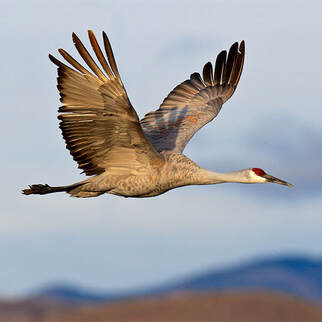
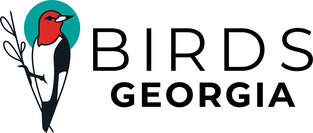
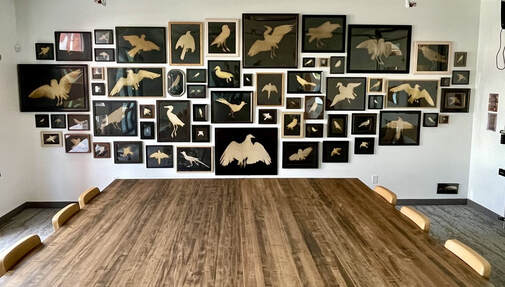
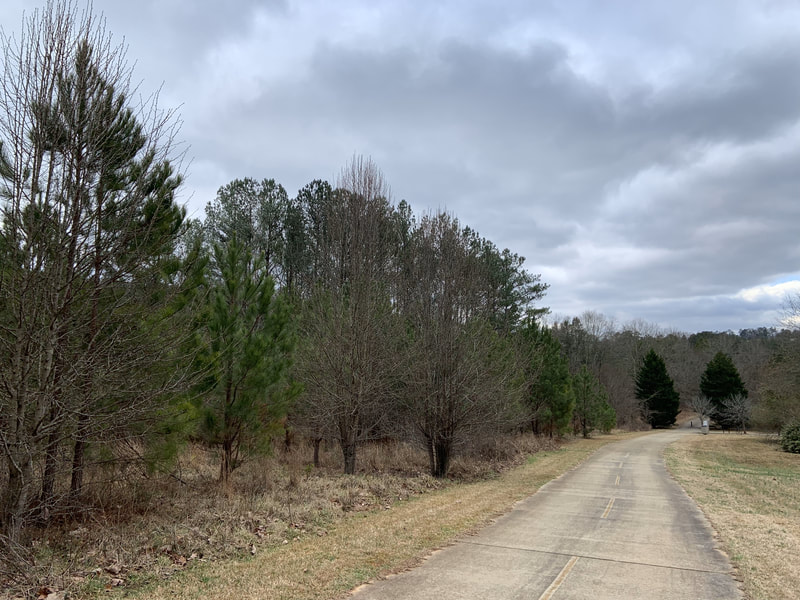
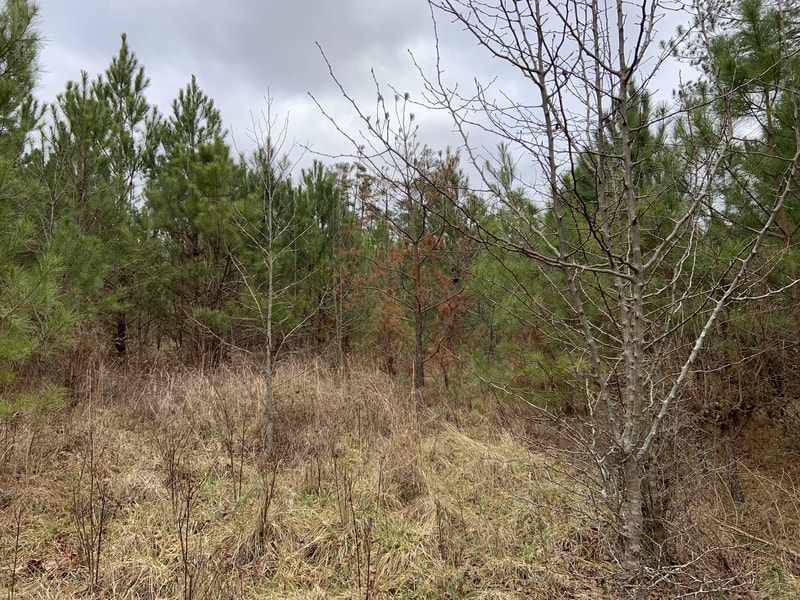
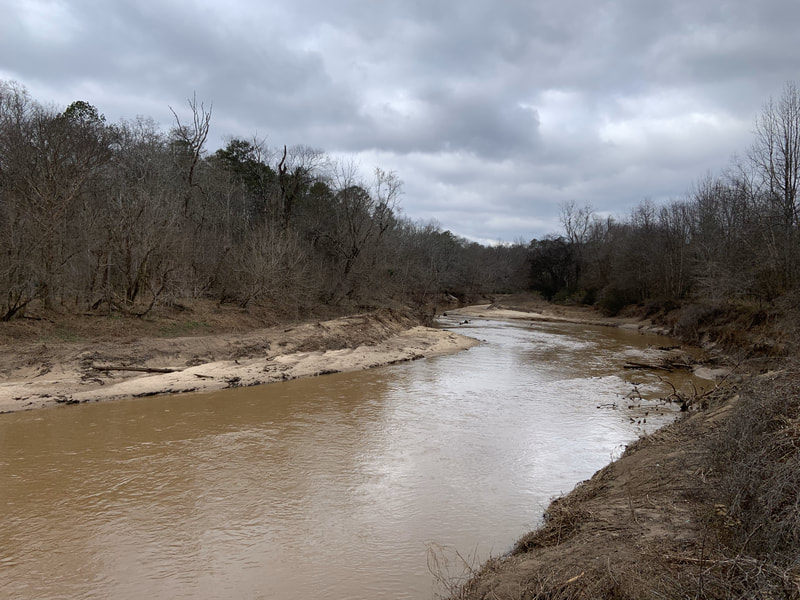
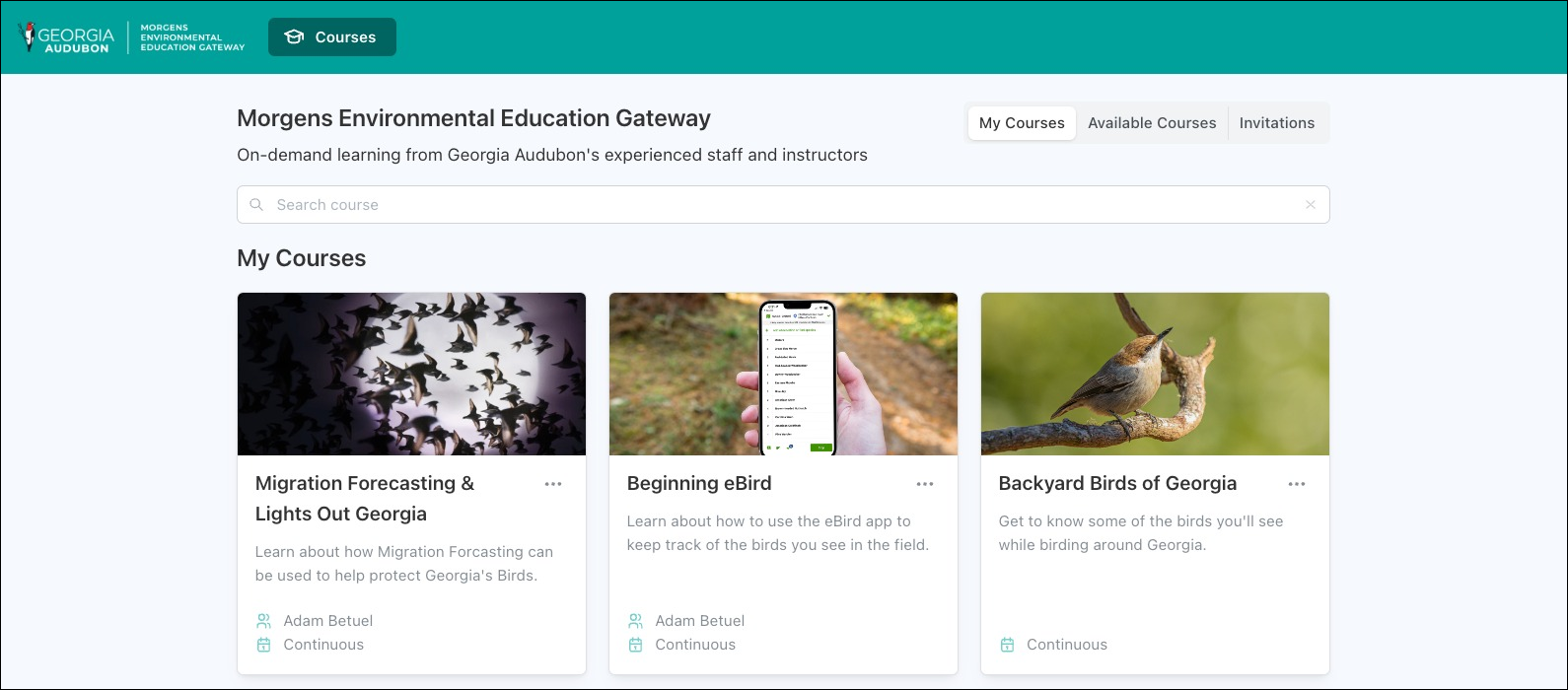
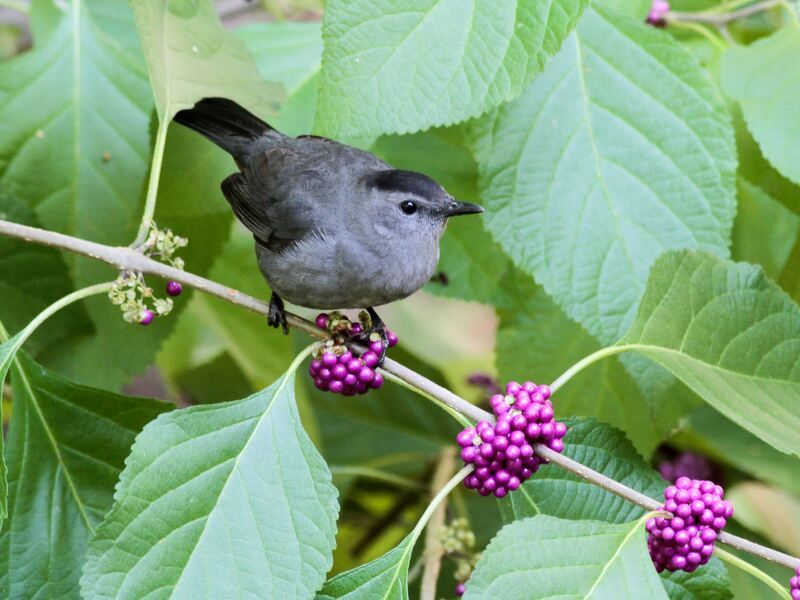
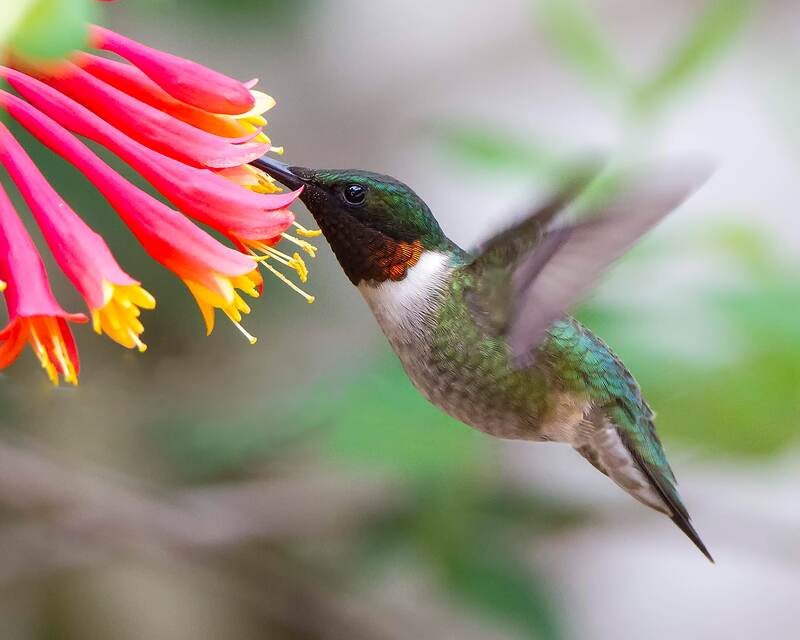
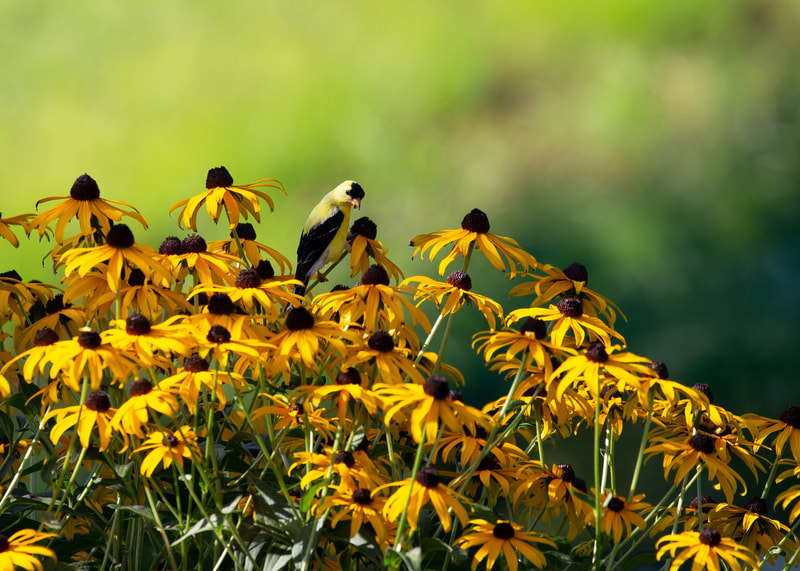
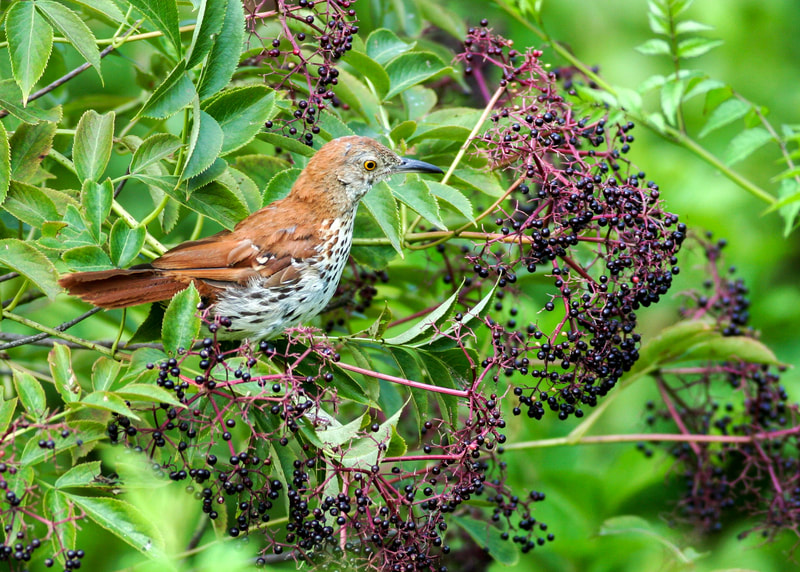
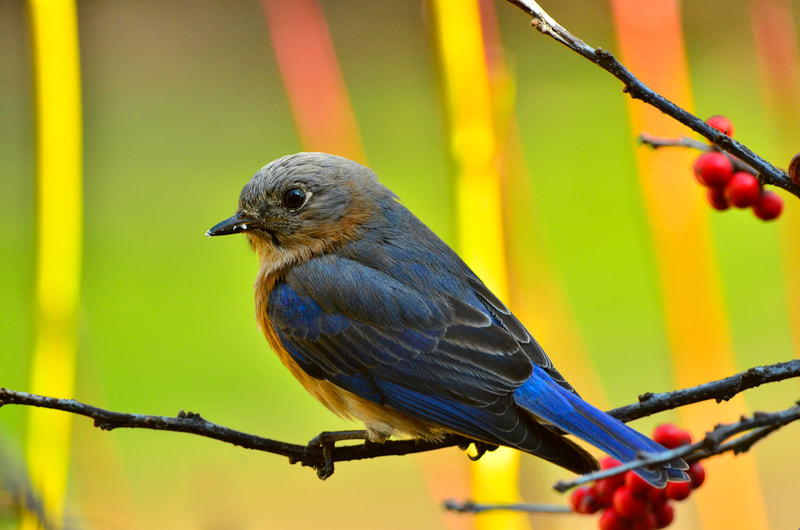
 RSS Feed
RSS Feed

